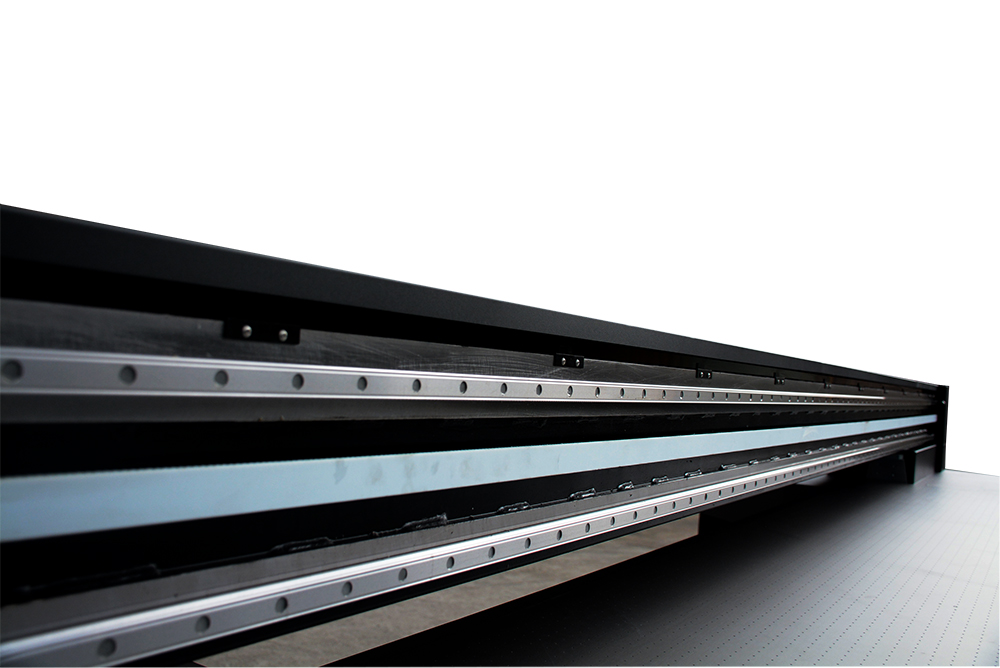UV Flatbed Printer: Tips for Printing on Metal Surfaces
UV Flatbed Printer: Tips for Printing on Metal Surfaces
UV flatbed printers have revolutionized the way we approach printing on various surfaces, including metal. These printers use UV-curable inks that are instantly dried by UV light, allowing for precise and durable prints on a wide range of materials. When it comes to printing on metal surfaces, there are specific tips and considerations to ensure optimal results. This article will guide you through the process, from preparation to post-processing, to achieve high-quality prints on metal using a UV flatbed printer.

1. Understanding UV-Curable Inks
UV-curable inks are a type of ink that dries instantly when exposed to ultraviolet light. This quick curing process makes them ideal for printing on non-porous surfaces like metal, as they adhere well and provide excellent durability. These inks are also known for their vibrant colors and resistance to fading, making them suitable for outdoor applications.
2. Preparing the Metal Surface
Before printing on metal, proper preparation is crucial to ensure the ink adheres correctly and the print looks professional. Here are some steps to prepare the metal surface:
Clean the Surface: Remove any dirt, dust, or oil from the metal surface using a suitable cleaner. This step is essential to prevent any contaminants from interfering with the ink’s adhesion.
Degrease: Use a degreasing agent to remove any residual oils or greases that may be present on the metal surface.
Sand or Polish: Depending on the metal’s finish, lightly sanding or polishing the surface can help create a smoother base for printing. Ensure the surface is uniform and free of any imperfections that could affect the print quality.
Prime the Surface: Applying a thin layer of primer can enhance the ink’s adhesion to the metal. Choose a primer compatible with UV-curable inks and allow it to dry completely before printing.
3. Choosing the Right UV Flatbed Printer
Not all UV flatbed printers are created equal, and some are better suited for printing on metal than others. Consider the following factors when choosing a printer:
Print Bed Size: Ensure the printer’s bed is large enough to accommodate the metal pieces you intend to print on.
Ink Compatibility: Check that the printer uses UV-curable inks specifically designed for metal surfaces.
Print Resolution: Higher resolution printers will produce sharper and more detailed prints.
UV Light Intensity: Look for printers with adjustable UV light intensity to cure the ink effectively on metal surfaces.
4. Designing for Metal Printing
When designing graphics for metal printing, keep the following tips in mind:
Contrast and Color: High-contrast designs tend to look more striking on metal surfaces. Experiment with bold colors to make your prints pop.
Simplify Complex Designs: While UV flatbed printers can handle intricate designs, simplifying complex graphics can help prevent ink bleeding or smudging on metal surfaces.
Test Prints: Before printing a large batch, do test prints on metal samples to ensure the design looks as intended.
5. Printing Techniques
Once the metal surface is prepared and the design is finalized, it’s time to start printing. Here are some techniques to achieve optimal results:
Temperature Control: Maintain a consistent temperature in the printing environment, as fluctuations can affect the ink’s curing process.
Proper Ink Loading: Ensure the printer’s ink channels are loaded correctly and that the ink levels are adequate for the print job.
Calibration: Regularly calibrate the printer to maintain print quality and accuracy.
Print Speed: Adjust the print speed according to the ink’s curing requirements. Slower speeds may be necessary for thicker ink layers or larger print areas.
6. Post-Processing
After printing, post-processing steps can further enhance the print’s durability and appearance:
Curing: Depending on the printer and ink used, additional curing with a UV lamp may be necessary to ensure the ink is fully cured.
Cleaning: Gently clean the printed surface to remove any excess ink or residue.
Applying a Protective Layer: Consider applying a clear coat or protective layer over the print to increase its resistance to wear and tear.
7. Common Challenges and Solutions
Printing on metal surfaces with a UV flatbed printer can present unique challenges. Here are some common issues and their solutions:
Ink Adhesion: If the ink doesn’t adhere properly, ensure the metal surface is clean, degreased, and primed. Adjusting the printer’s settings or using a different primer may also help.
Ink Bleeding: To prevent ink bleeding, avoid printing designs with very thin lines or tight spaces between elements. Adjusting the print resolution or ink thickness can also help.
Curing Issues: If the ink doesn’t cure properly, check the UV light intensity and ensure the printer’s curing settings are appropriate for the ink and metal surface.
8. Conclusion
Printing on metal surfaces with a UV flatbed printer offers endless creative possibilities. By understanding the process, preparing the metal surface correctly, choosing the right printer, designing effectively, and following proper printing and post-processing techniques, you can achieve high-quality, durable prints that make a lasting impression. Whether you’re printing signage, decorative pieces, or functional components, UV flatbed printing on metal is a versatile and reliable solution. With practice and attention to detail, you can master the art of printing on metal and expand your printing capabilities.
